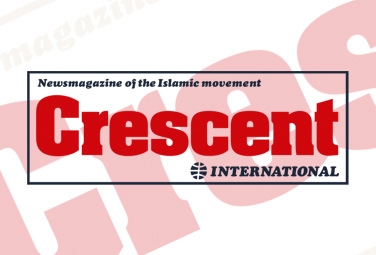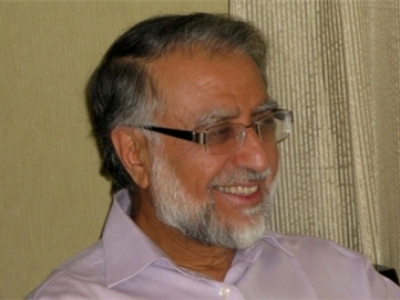by Abu Dharr (Guest Editorial, Crescent International Vol. 37, No. 2, Rabi' al-Awwal, 1429)
In the early years of Muslim history we had most of the political pulses that we have today. Not many Muslims, not even many intellectual Muslims, are willing to examine human nature, cultural influences, social trends and political priorities fourteen hundred years ago as well as today. We all know that the Prophet (saw) lifted the mental, behavioral and social standards of his followers and supporters to unprecedented heights of selflessness and social justice. We also should know that Arabian society in general – despite the fact that there was a vanguard of committed Muslims breaking new moral and political ground – still had its national character and cultural history, and was influenced by them. True, all of Arabia was won over to Islam. The social direction of the tribes and peoples of that region, after a lifelong struggle of 23 years of prophethood, took an Islamic direction.
The larger picture of the deen radiating from Madinah unto the four corners of the earth is, now that we look back at it, breathtaking, electrifying and mystifying. Never in the annals of human history has a Scriptural mission caused the spectacular and awe-inspiring re-direction of populations from their local codes and practices to a justice-centred Islam. The large-scale picture of Islam on the move from Arabia into Asia, Africa and Europe still has no human explanation for this burst of energy carried from Arabia by energetic and committed Muslims out of the Peninsula into the rest of the world. This still remains a task for Muslim social scientists with an eye on human nature and behavior and another eye on divine will and decree.
But if we scrutinise the internal affairs of “we the Muslims” we find the “devil in the detail.” We have to visit our own selves and examine our motivations as we tried to fulfill our Islamic responsibilities in that earlier time in our history. The unspoken, unadmitted fact is that the Companions (ra) of the Prophet (saw), once the Prophet (saw) had died, were left with his standards of ethical governance pulling in one direction and the “baggage” of tribe, ethnicity, nationalism and class pulling in other directions altogether. To put this in today’s language, the Prophet (saw) and the Qur’an had worked on a team of committed Muslims who would see to it that the Prophet’s standards of governance and justice lived on after him. For about thirty years after the Prophet these Companions (ra) struggled to honor their Prophet’s memory and example. They struggled because of social, tribal and fiscal forces that were agitating for a break or distance from Islamic authority; some even refused to pay their dues to the Muslims’ treasury. As a result transpired what are known to Muslim historians as Hurub al-Riddah (the wars of apostasy or renunciation). The Companions of Allah’s Messenger also struggled with the question of how to go about appointing a successor to the Prophet (saw) or “seating his proclaimed successor” without provoking a “tribal” or a “communal” backlash from other power factions (in the Hijaz in particular and in Arabia in general). They also had to struggle against the emergence of a nouveau riche category of people.
That early history produced the “conflict” between Imam ‘Ali (ra), who held to the standards of Allah and His Prophet (saw) and would not negotiate or politicise those standards, and Amir Mu’awiyah, who wanted to hold onto power by establishing a power-base on the assumptions of pragmatic and diplomatic arguments. If we could look with a clear and detached eye at our history we could pinpoint Mu’awiyah’s position as one that argues for a “national interest.” His reading of the situation was that the survival of an “Islamic state” depended on the consolidation of its citizens within a cultural and national identity. And the rest, as they say, is history.
It is not merely academic and theoretical interest that promotes this overview of Muslim history. The same or similar motivations and patterns of behaviour are present in our lives today. Last month there were elections in Islamic Iran. As usual, the media talked about “conservatives” and “reformers” who were competing for seats in the Majlis, but there is no need for us to fall into the same errors of analysis. For the last three decades Islamic Iran has been holding regular elections at every level, from the municipal to the national. What most of us don’t know, however, is that, as in the years after the Prophet (saw), the scholars and devotees of Islam there are trying their best to uphold the standards of the Prophet (saw) that have been mentioned above. Within “Iran” today, as in Arabia 14 centuries ago, there are clannish tendencies, cultural forces and “class” interests. And, to the credit of the decision-makers of Islamic Iran, their struggle is an echo of that monumental struggle after the Prophet (saw) passed away. The Islamic movement in the rest of the world must take notice of events in the still-growing Islamic Iran. The “reformists” (as they are called by some) are little more than an Umayyad Trojan horse. There are many Mu’awiyahs lurking inside the body politic of the Islamic state in Iran; we might call them the Persian Mu’awiyahs, or the Shi‘i Mu’awiyahs. Muslims must not make the mistake of thinking that their arguments will not appeal to the cultural, sectarian or nationalist Iranians; they certainly will. They can be identified by stock phrases that have become nonsensical by their endless repetition, such as “the national interest”, or “the Iranian nation”, or “the dialogue of civilisations”, or “the Iranians are not more Palestinian than the Palestinians”, or “it’s the economy, stupid”, or “high inflation” or “drastic unemployment.”
Islamic Iran, like the initial thrust of Islam out of Arabia, has built itself up in the last thirty years into a regional power to be reckoned with. The world’s imperialist and zionist powers have larger fish to fry than the petty politics of the local bazaari types. They are having to deal with a government in Tehran that has survived their hot and cold wars. They are seeing a dedicated leadership successfully bring the zionist occupation of the Holy Land to the center of the overall political scene of the Middle East. They are observing how their client regimes can no longer look askance at the Islamic Republic because it is more popular with their people than their own governments and officials.
But when we look more closely, the devil remains in the detail. Within the culturally and linguistically diverse people of Iran there is a strain of virulent sectarianism that has deep roots. These roots are so strong that they can isolate and choke off the flowers and blossoms of a change that offers the rest of the Ummah (and through it all of humanity) new hopes and fresh possibilities.
The continued occupation of Iraq, as well as the continuing occupation of the Holy Land, are strong arguments for a new direction. The nationalist “Islamic” types know this very well. So, like Mu’awiyah, they are waiting for popular opinion to turn against “the line of the Imam” so that they can make their move, ride the wave of popular discontent, and eventually “rescue” their people from their transnational, transcultural, Ummah-encompassing identity. This must not be allowed to happen.




